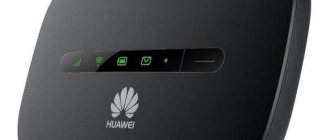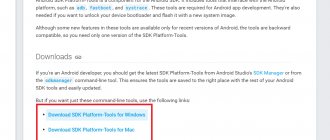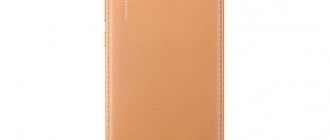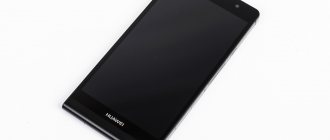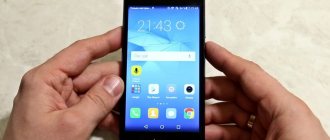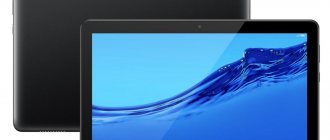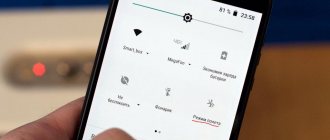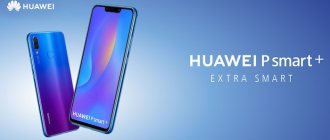Appearance and photos of the smartphone
Advantages and disadvantages of Ascend P7 phone
The dimensions of Huawei Ascend P7 are 68.8 mm wide, 139.8 mm long and 6.5 mm thick. With such dimensions it is convenient to operate the device with one hand. In addition, the weight of the device is about 124 g. Even if you operate the device with one hand, its weight is almost not felt.
If we evaluate the overall ease of use of the phone taking into account the size and weight, then there will be no problems with everyday use.
The smartphone is equipped with a 4-core Huawei HiSilicon V9R1 KIRIN 910T processor, which is made at 28 nm. technical process.
The smartphone has 2 GB. RAM, which is quite enough. In very rare cases it will not be enough, but with this amount of RAM, you will rarely have problems.
The device's data storage capacity is 16 GB, and while this is enough for photos, it may not be enough for video shooting and a large number of games.
The phone is compatible with SD cards, so you can easily expand its memory. So you probably don't need to worry about storage capacity.
Ascend P7 has a 5-inch display diagonal. The display is large enough that you will rarely have problems with its size. However, this display is not suitable for writing long texts.
The smartphone has a high-end display and any graphic content you display on it, including videos and games, will be displayed clearly.
The main camera of the phone has 12.98 megapixels and can take high-resolution photos and videos. While you're shooting landscapes or printing high-definition photos, you may want a higher-resolution camera, but most of the time you'll be happy with the camera.
Also, the smartphone has a 5.99 megapixel front camera, which is average for smartphone cameras. This is good enough for taking selfies, but you may not be satisfied with group photos or their print quality.
The battery capacity of Huawei Ascend P7 is 2500 mAh, which is a common capacity indicator. Compared to other smartphones, the battery life of the Huawei Ascend P7 is average. You don't have to worry about anything during daily use. However, if you spend time surfing the internet or playing games, you might be a little underwhelmed by the battery life.
Why update the firmware on Android
Everyone is motivated by different reasons.
- There is a problem with the front or rear camera.
- Poor display response to touch.
- I would like to see the new Android Pie 9.0.
- I'm tired of the old version of Android and want new features and capabilities.
- The smartphone does not turn on or is terribly glitchy.
- The phone stopped charging.
Detailed technical specifications
Make and model
Make and model of the device, and alternative names (if any).
| Brand Device manufacturer company. | Huawei |
| Model Device name. | Ascend P7 |
| Alternative names Other model names, if available. Sometimes the model is called differently, depending on the country or because of popular nicknames. | Sophia P7-L00 P7-L05 P7-L10 |
Design
Appearance of the device including dimensions, weight, volume, colors and materials.
| Width The horizontal side of the device when used in standard orientation. | 68.8 mm (millimeters) |
| Height The vertical side of the device when used in standard orientation. | 139.8 mm (millimeters) |
| Thickness The cross-sectional size of the device. | 6.5 mm (millimeters) |
| Weight How much does the device weigh excluding the case, SIM and memory cards and other additional elements. | 124 g (grams) |
| Volume Approximate value calculated using the formula: length times width times height. | 62.52 cm³ (cubic centimeters) |
| Colors What colors is the device available in? | Black White Pink |
System on a Chip (SoC)
A system on a chip, a single-chip system (System on a Chip, SoC) is when several systems performing different device functions are connected on one chip.
| System on a Chip (SoC) A single-chip system that contains components such as a processor, graphics accelerator, memory units, communication interfaces, etc., as well as software for the operation of the system. | Huawei HiSilicon V9R1 KIRIN 910T |
Central processing unit (CPU)
| Central processing unit (CPU) The main component of the device is responsible for calculations and data processing. | ARM Cortex-A9 |
| Technical process What technological process is used to make the chip? The smaller the process technology, the better - the chips consume less power and generate less heat. | 28 nm (nanometers) |
| Processor size Processor capacity is a parameter that indicates how many bits of data a processor register processes in 1 clock cycle. This is usually 32 or 64 bits. | 32 bit |
| Instruction Set Architecture Instruction set architecture (ISA) is a programmable part of the microprocessor core used by software to control the operation of the processor. | ARMv7 |
| Number of processor cores The processor can be either single-core or multi-core. The performance of the processor depends on the number of cores (threads). The more cores working simultaneously, the higher the power consumption, so in mobile devices all cores are used only under high load. | 4 |
| CPU clock speed Clock speed is the number of operations per second that a processor or its core can achieve. The higher the frequency, the higher the overall performance of the device, but performance also depends on the processor architecture and the number of cores. | 1800 MHz (megahertz) |
Graphics Processing Unit (GPU)
| Graphics Processing Unit (GPU) The graphics processing unit (GPU) is used to process and display graphics - 3D effects, games, interfaces and other visual elements. Due to the pipeline architecture, the GPU is many times more efficient in graphics processing than the processor. | ARM Mali-450 MP4 |
| Number of GPU cores Similar to a processor, a GPU can have one core or several. The number of cores (threads) determines the performance and amount of information processed. The more cores, the better. | 4 |
Random access memory (RAM)
| Amount of random access memory (RAM) RAM (Random Access Memory, RAM, RAM) is temporary memory (works only while the device is running), which stores data and code for the operational operation of programs and applications. The more RAM, the more programs you can run simultaneously without loss of performance (there will be fewer “brakes”). | 2 GB (gigabytes) |
Built-in memory
Most mobile devices have built-in Flash memory, which is used as a storage for system data, the operating system, as well as user data - photos, videos, recordings and much more.
| Built-in memory capacity The higher the amount of built-in memory, the more games, programs, music, videos and your other files will fit in the device, especially the amount of memory is important when the device does not support memory cards. | 16 GB (gigabytes) |
Operating system
A mobile operating system (OS) is pre-installed software with a well-thought-out interface for user control of device functions.
| Operating system (OS) The operating system installed by default by the device manufacturer, as well as its version. | Android 4.4.2 KitKat Android 5.1.1 Lollipop |
| User interface User interface (UI - user interface) is usually a graphical shell that ensures the transfer of information between the user and the operating system. | Emotion 2.3 |
Battery
To operate autonomously, a mobile device requires a battery that powers all its components.
| Battery capacity The main characteristic of a battery is its maximum capacity, that is, the charge it can store. Capacity is measured in mAh (mAh, milliamp-hour). The higher the capacity, the longer the mobile device can work. | 2500 mAh (milliamp-hours) |
| Battery type Many types of batteries have been used in portable devices, but NiCd (nickel-cadmium), NiMH (nickel-metal hydride), and even more so SLA (lead-acid) batteries are already considered obsolete. Instead, modern mobile devices use Li-Ion (lithium-ion) and Li-Pol, Li-Poly (lithium-polymer) batteries. | Li-polymer |
| Call duration on 2G network (GSM, CDMA) Approximately how long will it take for a fully charged battery to discharge when talking in 2G mode. Approximate, because this time is influenced by many factors, such as the operator, signal strength, active applications, and so on. | 22 h (hours) 1320 min (minutes) 0.9 days |
| Waiting time on 2G network (GSM, CDMA) Approximately how long will it take for a fully charged battery to discharge if the mobile device is not used and is connected in 2G mode. | 422 h (hours) 25320 min (minutes) 17.6 days |
| Call duration on 3G network (WCDMA, UMTS, CDMA2000) About how long a fully charged battery will be discharged during a call on third generation networks. Approximate time because it is influenced by various factors, including ambient temperature. | 14 h (hours) 840 min (minutes) 0.6 days |
| Waiting time on 3G network (WCDMA, UMTS, CDMA2000) About how long a fully charged battery will be discharged if the mobile device is in standby mode and connected to third generation networks. | 422 h (hours) 25320 min (minutes) 17.6 days |
| 4G (LTE) network latency How long will a mobile device last in standby mode when fully charged when connected to 4G networks. | 404 h (hours) 24240 min (minutes) 16.8 days |
Screen
The screen (display) is the main element for displaying graphic information.
| Technology The technology used to make the screen. There are many types of display manufacturing with their pros and cons. | LCD |
| Diagonal The screen diagonal of a device is measured in inches (inch, in or simply ″), and 1″ is equal to 2.54 cm. | 5 in (inches) 127 mm (millimeters) 12.7 cm (centimeters) |
| Width Approximate screen width | 62.26 mm (millimeters) 6.23 cm (centimeters) |
| Height Approximate screen height | 110.69 mm (millimeters) 11.07 cm (centimeters) |
| Aspect Ratio Aspect ratio is the ratio of the shorter side of the screen, which is considered to be 1, to the longer side, which is denoted by a decimal fraction indicating the ratio to the short side. | 1.778:1 16:9 |
| Screen resolution Screen resolution is the number of horizontal pixels (dots) multiplied by the number of vertical pixels. The higher the resolution, the more detailed the image will be. | 1080 x 1920 pixels |
| Pixel Density The number of pixels per inch or PPI (pixels per inch) indicates the density of pixels per 1 inch (2.54 cm) of the screen. The higher the PPI, the sharper the image, and the less visible or even invisible “squares and dots” (pixels). | 441 ppi (pixels per inch) 173 ppcm (pixels per centimeter) |
| Color depth Color depth means how many bits are used in 1 pixel to display color (bits per pixel). | 24 bit 16777216 colors |
| Screen area Approximate usable area occupied by the screen on the front of the device. The higher the percentage, the narrower the frames around the display or the smaller the “chin with bangs.” | 71.89% (percent) |
| Touch screen A touch screen is a device that usually covers the display and is a touch input tool. In fact, in mobile devices, the touchscreen is a replacement for the keyboard and mouse. | Yes |
| Touch screen type There are many types of touch screens, with their pros and cons. Mobile devices often use capacitive touchscreens, but technology does not stand still and new types of sensors are appearing. | Capacitive |
| Multi-touch Touch screen support for two or more touches. For example, zooming photos with two fingers. | Yes |
| Impact-resistant protective glass of the display The screen and touchscreen of a mobile device are usually covered with protective tempered glass (sometimes plastic or film is used instead of glass) to protect the display from impacts and scratches. Many companies are engaged in the production of such protection, but the most famous are Corning - Gorilla Glass and Asahi - Dragontrail. | Yes Corning Gorilla Glass 3 |
Main camera
The main camera, usually built into the rear of the device, is designed for creating photo and video content.
| Maximum image resolution This is the maximum number of pixels (dots) horizontally and vertically. The higher the resolution, the more detailed the image will be. Resolution can also be indicated in megapixels - this is the total number of pixels that can be in the image, calculated by the formula: vertical pixels multiplied by the number of horizontal pixels and divide the resulting amount by 1 million. | 4160 x 3120 pixels 12.98 MP (megapixels) |
| Matrix type There are two main types of photomatrix, CCD (Charge-Coupled Device) and CMOS (Complimentary Metal-Oxide Semiconductor). Mobile devices mainly use a CMOS matrix - it requires less space, has low power consumption and heating. Recently, new types of sensors have begun to appear, for example PureCel from OmniVision. | CMOS BSI (backside illumination) |
| Focal length Focal length is the distance from the center of the lens to the image sensor. | 3.8 mm (millimeters) |
| Diaphragm Aperture (f-number, f) is used to control the light flux passing through the lens. The aperture is indicated by a fraction, and the smaller the fractional number, the higher the aperture passing through the lens. The more light that passes through the lens, the better overall, less noise in your photos and better night photography. | f/2 |
| Flash type Most mobile devices are equipped with light-emitting diode (LED) flashes, but there are also xenon flashes. As a flash, xenon is better - it is more powerful, but LED is more versatile (can work as a flashlight) and consumes less electricity. | LED |
| Maximum video resolution This is the maximum number of pixels (dots) horizontally and vertically. The higher the resolution, the more detailed the image will be. | 1920 x 1080 pixels 2.07 MP (megapixels) |
| FPS video recording at maximum resolution FPS (Frames per Second, frame rate) is the number of frames that changes in 1 second. The higher the number of frames per second, the smoother the image will be. In this case, we mean the number of frames that the camera can achieve at its maximum resolution; the lower the resolution, the higher the FPS can be. | 30 fps (frames per second) |
| Presence of flash Incorporating a flash into a mobile device allows you to take pictures in low light conditions. Creates the necessary lighting and compensates for the lack of natural light. | Yes |
| Number of lenses in the lens This is the number of optical elements (lenses) that are contained in the optical circuit of a camera lens. | 5 |
| Focus on face Function of auto-detection of living objects and autofocus on their face or head. | Yes |
| Panoramic shooting mode Panoramic photography is a series of frames where each subsequent frame is a continuation of the previous one; at the end of the shooting, all frames are stitched together at the software level to create a panoramic photograph. Frames can be shot both vertically and horizontally, and their width can be up to 360 degrees. This type of shooting is used when the camera's viewing angle is not enough to capture the entire scene. | Yes |
| HDR shooting mode HDR photography takes a quick series of shots with highlights, midtones, and shadows, then combines them into a single frame with high dynamic range. | Yes |
| Electronic (digital) image stabilizer EIS (Electronic Image Stabilizer - digital image stabilization) is performed using software algorithms and is needed to reduce blurring when the camera shakes. | Yes |
| Additional Information Additional information about the functions and characteristics of cameras. | Autofocus Continuous shooting Geo-tagging Touch focusing |
Front-camera
The front camera of a mobile device (selfie camera, rear camera) is a camera on the front part, which is usually used for video communication, recognition of gestures or faces, and selfie photographs.
| Photo resolution The maximum image resolution that the camera can produce. As resolution increases, image detail increases. Resolution can also be indicated in megapixels (the total number of pixels that an image can consist of) - these are vertical pixels multiplied by horizontal pixels and divided by 1 million. | 3264 x 1836 pixels 5.99 MP (megapixels) |
| Video resolution This is the maximum resolution the camera can record video at. The higher the resolution, the better. | 1920 x 1080 pixels 2.07 MP (megapixels) |
| Frame rate (FPS) of video shooting This is talking about FPS at maximum video resolution; at lower resolutions, the frame rate per second can be higher. FPS determines the smoothness of the video, as well as the ability to speed up or slow down it. | 30 fps (frames per second) |
Memory card
A memory card (flash card) is an external data storage device that is used in many devices to increase memory capacity.
| Memory card type and formats Mobile devices usually use 3 types of memory cards - SD, miniSD and the most common microSD. Each type has its own formats that the device supports. | microSD microSDHC microSDXC |
SIM card
Subscriber Identification Module (SIM) used in mobile devices to identify subscribers in cellular networks.
| Type, size of SIM card A regular (mini SIM) card has dimensions of 25x15 mm. Micro SIM - 15x12 mm. Nano SIM - 12.3x8.8 mm. The sizes of SIM cards are different and not interchangeable. There is also an eSIM (virtual, electronic SIM card), it is built into the device and does not take up space. | Micro-SIM (3FF - third form factor, since 2003, 15.00 x 12.00 x 0.76 mm) |
| Number of SIM cards How many SIM cards does the device support? | 1 |
| Additionally Additional information about the operation of SIM cards in the device. | Dual SIM optional (A version of the model that has two slots for SIM cards.) |
Mobile networks
This is a system in which communication and data transfer is carried out between subscribers, the location of one or more of which changes. This section lists the supported mobile communication standards and frequencies.
| GSM GSM (Global System for Mobile Communications) is a standard for digital mobile cellular communications of the second generation 2G with time and frequency division of channels. GSM came to replace analog cellular communications 1G (first generation). | GSM 850 MHz GSM 900 MHz GSM 1800 MHz GSM 1900 MHz |
| TD-SCDMA TD-SCDMA (Time Division Synchronous Code Division Multiple Access) is a third generation (3G) mobile communications standard used in China. | TD-SCDMA 2000 MHz (L05) |
| UMTS UMTS (Universal Mobile Telecommunications System), also called 3GSM, is a third generation (3G) mobile communications standard based on the WCDMA air interface. | UMTS 850 MHz UMTS 900 MHz UMTS 1700/2100 MHz UMTS 1900 MHz UMTS 2100 MHz |
| LTE LTE (Long-Term Evolution, often referred to as 4G LTE) is a standard for wireless high-speed data transmission, which, although it belongs to fourth generation networks (4G), is essentially a transitional stage from 3G to 4G, greatly accelerating data transfer speeds. The standard has an improved version, LTE Advanced (LTE-A), which can already be considered a full-fledged 4th generation network. | LTE 900 MHz LTE-TDD 2500 MHz (B41) (L05) LTE-TDD 1900 MHz (B39) (L05) LTE 800 MHz (L00) LTE 1800 MHz (L00) LTE 2100 MHz (L00) LTE 2600 MHz (L00) |
Mobile network data standards
What data transfer standards in cellular networks are supported by the device, as well as their speed.
| Data transmission technologies Technologies for receiving and transmitting data, as well as their maximum speed. | UMTS (384 kbit/s) EDGE Class 10 (59.2-118.4 kbit/s, 177.6-236.8 kbit/s) GPRS Class 10 (16-24 kbit/s, 32-48 kbit/s) HSPA+ (HSUPA 5.76 Mbit/s , HSDPA 42 Mbit/s ) LTE Cat 4 (51.0 Mbit/s , 150.8 Mbit/s ) |
WiFi
Wi-Fi (Wireless Fidelity) is a technology for wireless data transmission over a local network among devices based on IEEE 802.11 standards.
| Wi-Fi Direct support The Wi-Fi Direct protocol allows multiple devices to connect directly, bypassing the use of routers or access points. | Yes |
| Wi-Fi Hot-Spot A hotspot is a Wi-Fi access point. In a mobile device, Hot-Spot turns the smartphone into a Wi-Fi access point, essentially turning it into a router capable of distributing the Internet. | Yes |
| WiFi Supported WIFI wireless network standards. | 802.11b (IEEE 802.11b-1999) 802.11g (IEEE 802.11g-2003) 802.11n (IEEE 802.11n-2009) 802.11n 5GHz |
Bluetooth
Bluetooth (BT, bluetooth (z), “blue tooth”) is a short-range wireless network (up to 10, sometimes 100 meters) operating on radio waves to transmit voice and data between devices.
| Bluetooth version Bluetooth technology is actively developing and, since 1998, has been constantly updating versions of the standard. Each subsequent version introduces one or several improvements in data exchange speed, range, facilitates pairing, reduces power consumption, or introduces some new protocols and operating profiles. The higher the Bluetooth version, the better. The technology is also backward compatible, for example, if your mobile device has version 5.0, then it will work with accessories version 4.2 and lower, but the improvements introduced in version 5.0 will not work; they will work only if both the device and accessories are version 5. | 4.0 |
| Bluetooth Low Energy (BLE) Bluetooth LE is a low energy BT protocol specification. | Yes |
| A2DP profile The A2DP Bluetooth profile is designed to transmit a high-quality two-channel stereo signal via Bluetooth to wireless headphones, speakers and other acoustics. | Yes |
Sensors
Modern devices have many sensors that help in measurements, trigger functions, and make using the device more pleasant.
| Light sensor The light sensor reacts to the light level and is able to adjust the screen brightness automatically based on this. This is necessary to reduce power consumption and ease of use of the device. | Yes |
| Proximity sensor The proximity sensor reacts to the proximity of the mobile device to some object. For example, the sensor is used when talking on the phone to turn off the screen, which saves energy and prevents you from pressing buttons with your ear or cheek. | Yes |
| Gyroscope Gyroscope (gyroscope, gyro sensor) is a sensor for orientation in space that tracks the angle of inclination of even a stationary device along three coordinate axes. The sensor is mainly used in conjunction with an accelerometer in games and applications. | Yes |
| Accelerometer An accelerometer is a sensor that measures apparent acceleration, that is, it determines the position and distance at which a mobile device moves in space. Based on the data from this sensor, the screen orientation change, pedometer, control using tilts and gestures in games and applications, etc. work. | Yes |
| Digital compass This is software that displays data from a magnetic sensor or GPS in the form of a compass on the screen of a mobile device. If there are no sensors or GPS, then the digital compass will not work. | Yes |
| Additional sensors |
Audio
Audio - characteristics and capabilities of a mobile device in terms of sound.
| Music speaker There are two types of speakers in mobile devices - auditory and musical. The auditory speaker (speaker) is used for conversation, the music speaker (buzzer) is used to play music and sounds. | Loudspeaker Earphone—- DTS |
Radio
The radio in a mobile device can be built-in by the manufacturer (catch local radio channels, no internet required, often works only with headphones (as an antenna), but not always) or installed as an online application (requires internet, but more channels and often better quality) .
| Built-in radio Is a radio tuner integrated into the mobile device? | Yes |
Navigation and location
The location is determined by satellite navigation systems that track the device's autonomous geospatial location at multiple points. The most common satellite navigation systems are GPS, GLONASS, and the Chinese BeiDou.
| GPS GPS (Global Positioning System) is a global satellite navigation system that can determine the position of a mobile device, build routes and find the desired object on the map with an accuracy of several meters. | Yes |
| A-GPS A-GPS (Assisted GPS) is an assistive technology that will help you quickly find the location of your cellular device without waiting for satellite data, which is especially important in indoors and cities. Location is determined in various ways, for example, Wi-Fi access points, mobile towers, bluetooth and others. | Yes |
| GLONASS GLONASS is a Russian Global Navigation Satellite System, which is similar to GPS and works in tandem with it, increasing the accuracy and speed of navigation. | Yes |
| Additional navigation systems |
USB connector
USB (Universal Serial Bus) is a serial interface for connecting peripherals to computers, smartphones, laptops and much more. The interface allows you to exchange data and power a peripheral device with energy, as well as connect several peripheral devices to one USB connector at once.
| Connector type What type of USB connector is used in the device. | Micro USB |
| USB standard The higher the standard, the faster the throughput, or more precisely the data exchange rate. With version 3.0 of the standard, the current was increased to 0.9A, eliminating the need for additional power for some devices. | 2.0 |
| USB Mass Storage Connecting a mobile device via USB as a data storage device. That is, when you enable this mode, your device can be used as a flash drive. | Yes |
| USB OTG support OTG is the ability to connect peripherals, such as keyboards and mice, flash drives, card readers, and much more, to the USB port of your device via an adapter or directly. You can connect devices that do not require specialized drivers or additional power. | Yes |
| Additional characteristics Additional features of the USB connector, for example, OTG, whether the connection is supported, peripheral devices and additional memory. | Charging via USB |
Headphone jack
A TRS headphone jack (or jack) is a common standard of connectors used for transmitting audio signals. By diameter there are jack (6.5 mm), mini-jack (3.5 mm) and micro-jack (2.5 mm). In mobile devices, the 3.5mm jack was considered the most popular and widespread, but recently they began to be removed, leaving only USB connectors, through which headphones are connected with a corresponding plug or using adapters.
| 3.5mm headphone jack Does the device have a 3.5 mm audio jack? | Yes |
Connection and synchronization
Options for synchronizing your mobile device and connecting it to other devices.
| NFC NFC (Near field communication, near contactless communication) is a technology for contactless communication between devices over a short distance. Widely used for contactless payment, in the form of a travel card or pass, and is also used for reading and interacting with NFC tags and for exchanging data between devices. | Yes |
| Connection, synchronization Types of synchronization and connection technologies supported by the device. | Computer sync OTA sync Tethering DLNA |
Browser
A browser is a browser program for viewing sites and their content on the Internet. Through the browser, you can open websites, search for information, download necessary files, watch streaming videos, play browser games, etc.
| Technologies Markup and programming languages supported by the built-in (standard) browser. For mobile devices, you can install additional browser applications if the standard one does not suit you. | HTML HTML5 CSS 3 |
Audio file formats/codecs
Mobile devices support many audio file formats, as well as codecs for playing them.
| Default formats The formats that the mobile device supports out of the box are indicated. But if the device does not support the format you need, then you can try adding support for it. Sometimes support depends on the technical characteristics of the device (“hardware”) and nothing can be added here, but often the ability to process a particular audio format depends on the software part. You can install another audio player or codec set separately. | AAC (Advanced Audio Coding) AAC+ / aacPlus / HE-AAC v1 AMR / AMR-NB / GSM-AMR (Adaptive Multi-Rate, .amr, .3ga) AMR-WB (Adaptive Multi-Rate Wideband, .awb) eAAC+ / aacPlus v2 / HE-AAC v2 FLAC (Free Lossless Audio Codec, .flac) MIDI MP3 (MPEG-2 Audio Layer II, .mp3) RealAudio (.ra, .ram) WMA (Windows Media Audio, .wma) WAV (Waveform Audio File Format, .wav, .wave) |
Video file formats/codecs
Video file formats that the device supports and is capable of decoding and playing.
| Default formats Video file formats that the device is capable of playing with standard firmware and a standard (built-in) set of programs. Not all formats are supported by default, but you can install a third-party video player and/or set of codecs. | 3GPP (3rd Generation Partnership Project, .3gp) AVI (Audio Video Interleaved, .avi) Flash Video (.flv, .f4v, .f4p, .f4a, .f4b) H.263 H.264 / MPEG-4 Part 10 / AVC video MP4 (MPEG-4 Part 14, .mp4, .m4a, .m4p, .m4b, .m4r, .m4v) MPEG-4 VP8 WMV (Windows Media Video, .wmv) WMV9 (Windows Media Video 9, .wmv )Xvid |
Huawei Ascend P7 (P7-L10) display with touchscreen (black)
provides its own guarantee for the products we sell.
Warranty period for components for mobile phones, PSP and PDAs
- Warranty for products sold by us is 14 days from the date of purchase/sending of spare parts
The warranty for all products is valid subject to following simple rules:
- The protective film has not been removed (displays, touch/protective glass, etc.)
- No signs of self-repair (traces of disassembly, soldering);
- No mechanical damage;
- Preservation of warranty stickers, seals and packaging in which the spare part was purchased;
- Availability of all documents confirming the fact of purchase (invoice and/or receipt);
- Transportation costs for delivery of guaranteed products to the point of sale are not included in the warranty obligations.
The warranty does not cover spare parts, tools and equipment that have failed (lost consumer quality) as a result of mechanical damage, moisture, heating, electromagnetic influence or any other external factors that are not the culprit. Cables and keyboard backings are accepted without traces of mechanical impact (dents, bends, etc.).
Three steps to exchange goods of poor quality:
- 1. Fill out a return application
- 2. Send the Return Form by email;
- 3. In any way convenient for you, transfer the goods for quality control. Wait for a response from the complaints department!
If a defect is detected:
- Record the defect in the product (in a photo or video, depending on the nature of the defect), as well as the absence of a similar defect on your device.
- Send a photo/video of the defect by email
Worth knowing:
- Almost all displays fail as a result of mechanical shock. Breakage of the display due to “broken itself” is not a basis for return;
- Parts, like all equipment, have their own service life. Most of the cables fail before this time due to improper installation. This is especially true for slider phones.
- All components undergo quality control.
Please note that our product is technically complex. The list of technically complex goods that can be replaced only if there is a significant defect is approved by Decree of the Government of the Russian Federation of May 13, 1997 N 575. Defective goods are replaced with similar ones. If the product is currently out of stock, the money will be refunded or exchanged for another product (at the customer's request).
Attention!
If upon receipt of the parcel you see obvious defects in the box, you need to open the parcel in front of an employee, if the goods are of poor quality, draw up a REPORT OF DAMAGE ON THE INVESTMENT on the spot.

